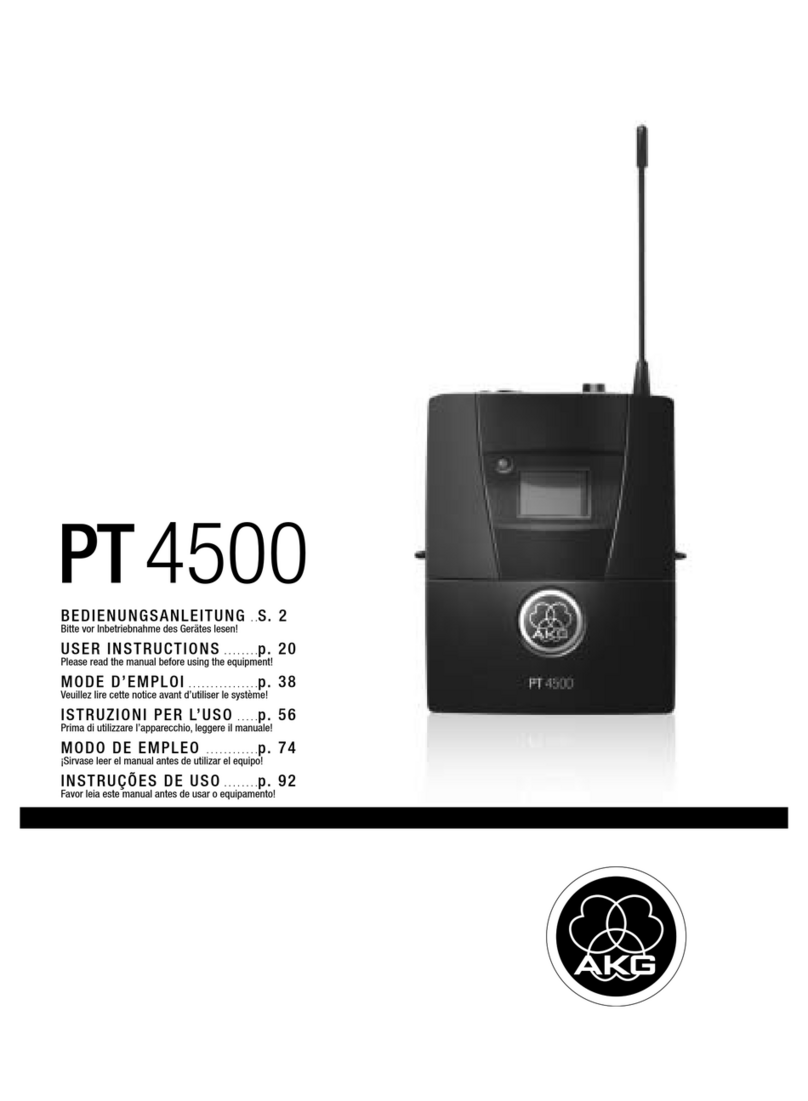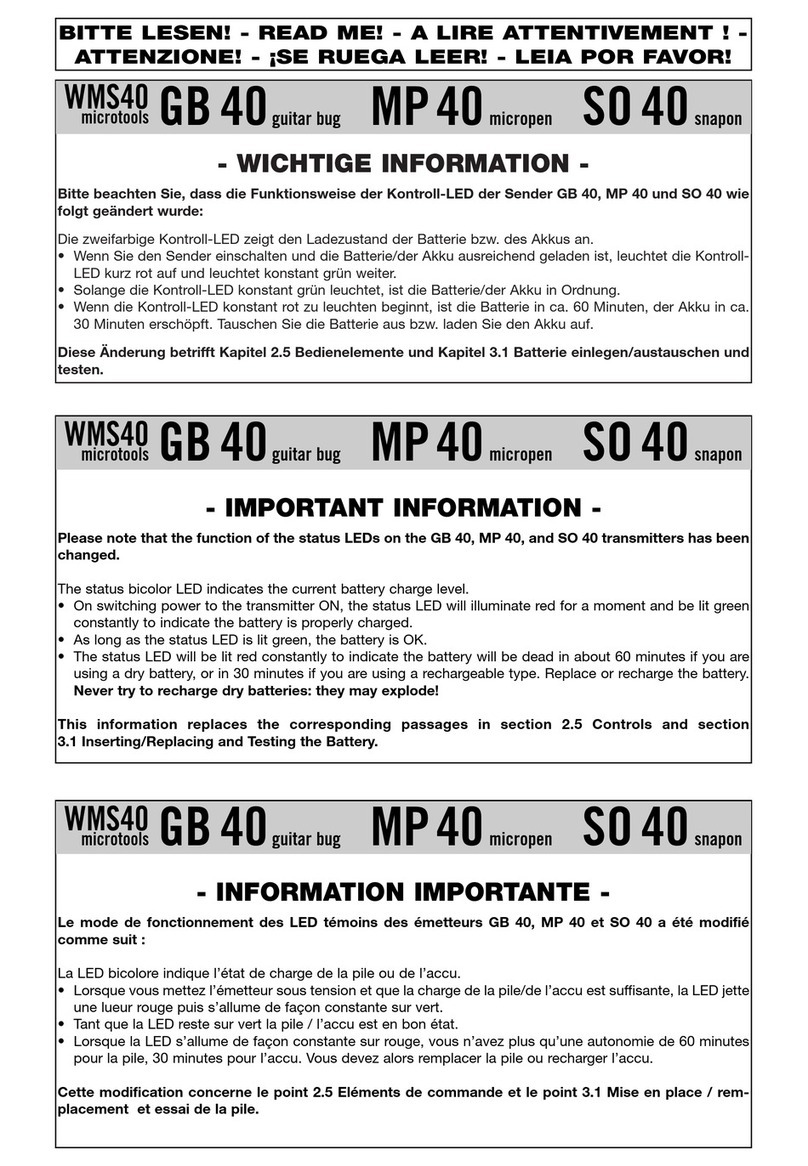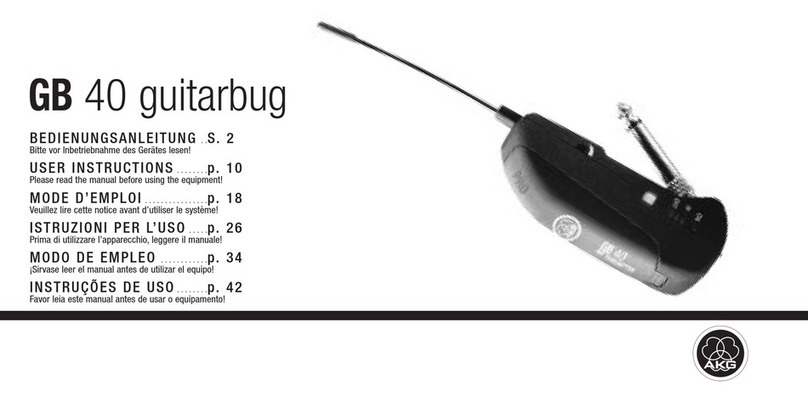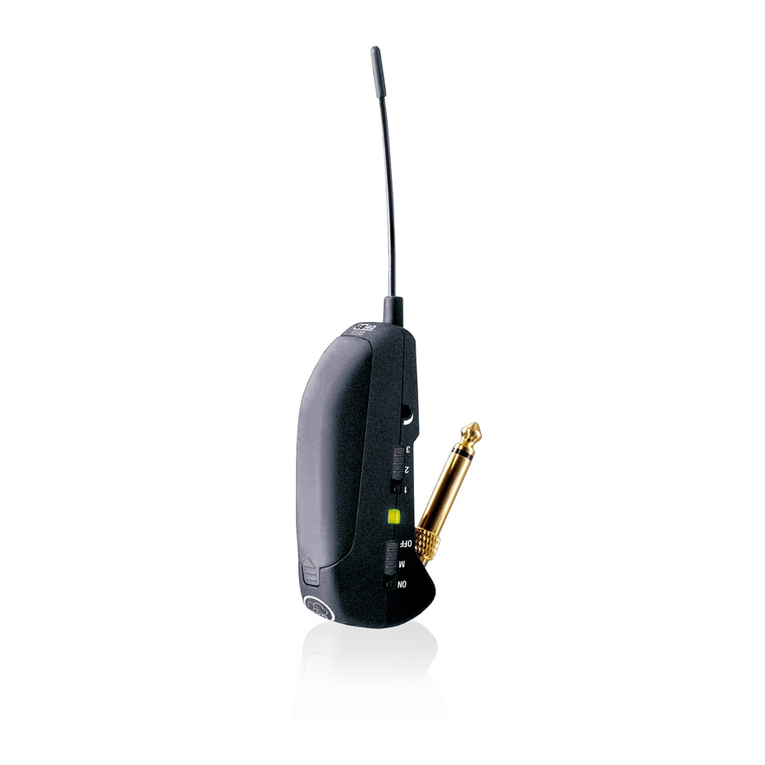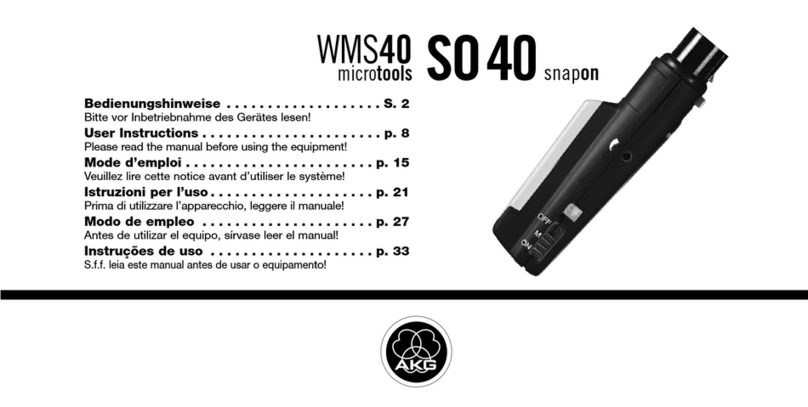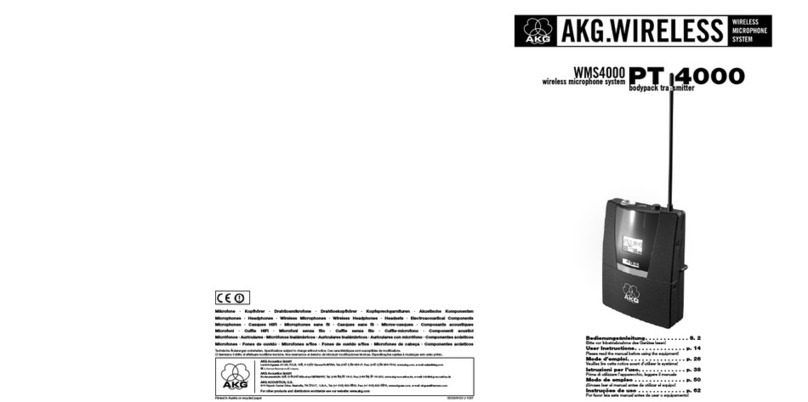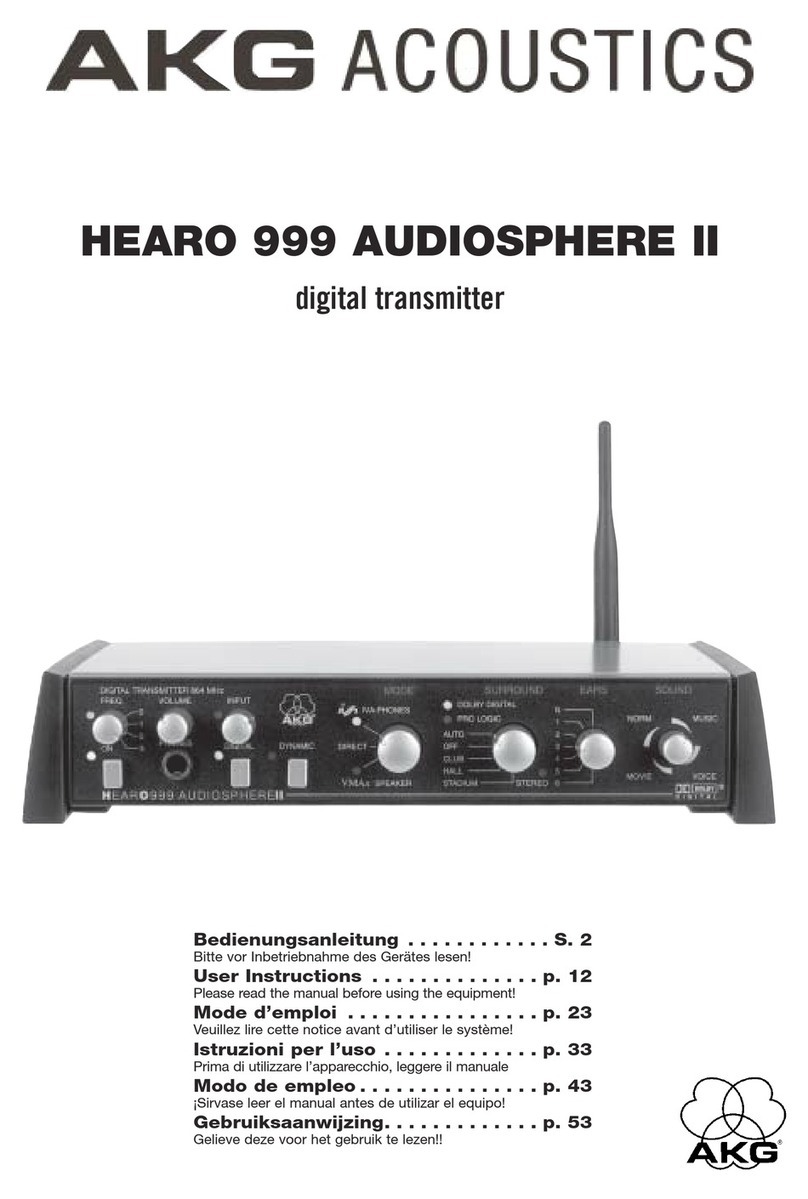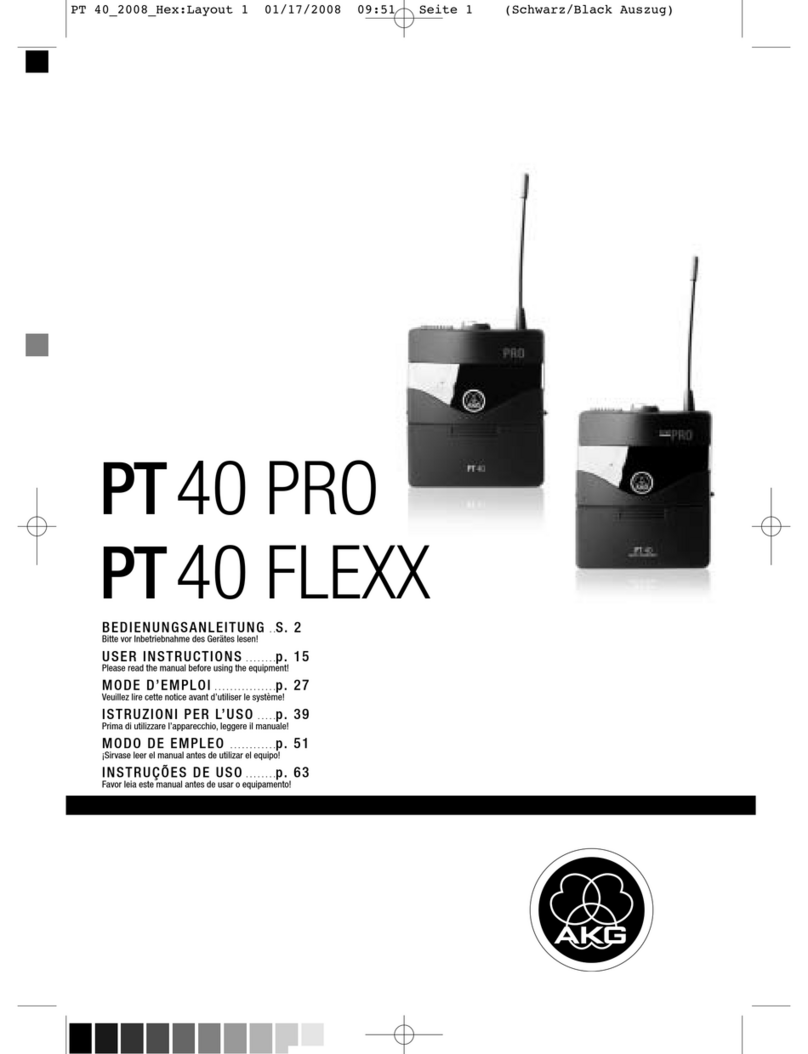3
SO 40 snapon
1 Sicherheit und Umwelt
1.1 Sicherheit
1. Setzen Sie das Gerät nicht direkter Sonnen-
einstrahlung, starker Staub- und Feuchtigkeits-
einwirkung, Regen, Vibrationen oder Schlägen
aus.
1.2 Umwelt
1. Entsorgen Sie verbrauchte Batterien und Akkus
immer gemäß den jeweils geltenden
Entsorgungsvorschriften. Werfen Sie Batterien
oder Akkus weder ins Feuer (Explosionsgefahr)
noch in den Restmüll.
2. Wenn Sie das Gerät verschrotten, entfernen Sie
die Batterien bzw. Akkus, trennen Sie Gehäuse,
Elektronik und Kabel und entsorgen Sie alle
Komponenten gemäß den dafür geltenden Ent-
sorgungsvorschriften.
3. Die Verpackung ist recyclierbar. Entsorgen Sie
die Verpackung in einem dafür vorgesehenen
Sammelsystem.
2 Beschreibung
2.1 Einleitung
Vielen Dank, dass Sie sich für ein Produkt aus dem
Hause AKG entschieden haben. Bitte lesen Sie
die Bedienungsanleitung aufmerksam durch,
bevor Sie das Gerät benützen, und bewahren Sie
die Bedienungsanleitung sorgfältig auf, damit Sie
jederzeit nachschlagen können. Wir wünschen
Ihnen viel Spaß und Erfolg!
2.2 Lieferumfang
• Kontrollieren Sie bitte, ob die Verpackung alle
oben angeführten Teile enthält. Falls etwas fehlt,
wenden Sie sich bitte an Ihren AKG-Händler.
2.3 Optionales Zubehör
• Optionales Zubehör finden Sie im aktuellen
AKG-Katalog/Folder oder auf www.akg.com.
Ihr Händler berät Sie gerne.
2.4 Beschreibung
Der SO 40 ist ein Miniatursender der Serie WMS 40
microtools, der speziell zum direkten Anstecken an
Mikrofone entwickelt wurde.
Der Sender besitzt einen 3-poligen Standard-XLR-
Stecker, mit dem Sie den Sender direkt an ein
dynamisches Mikrofon (z.B. AKG Emotion-Serie)
oder ein Kondensatormikrofon mit interner Strom-
versorgung (z.B.AKG C 1000 S) anstecken können.
Der SO 40 arbeitet auf einer fixen, quarzstabilisier-
ten Trägerfrequenz im UHF-Trägerfrequenzbereich
von 710 bis 865 MHz.
Die Farbe des Batteriefachdeckels entspricht der
Trägerfrequenz des Senders (siehe Manual Sup-
plement). Sie können den Batteriefachdeckel aber
auch gegen den mitgelieferten schwarzen Ersatz-
deckel austauschen.
1 Sender
SO 40
1 Batterie
Größe AAA 1 Batterie-
deckel
(schwarz)
L
!
